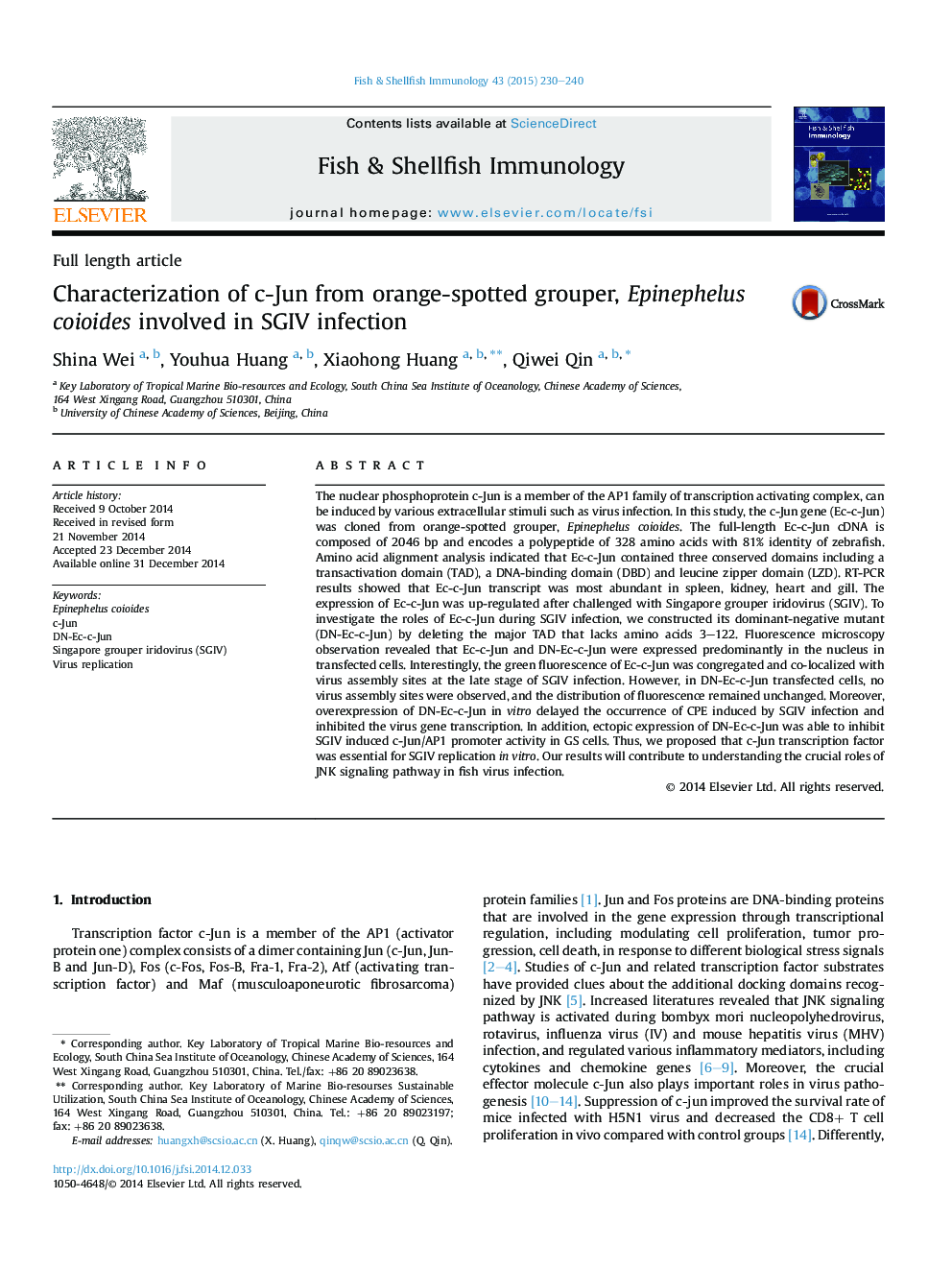| Article ID | Journal | Published Year | Pages | File Type |
|---|---|---|---|---|
| 2431337 | Fish & Shellfish Immunology | 2015 | 11 Pages |
•c-Jun gene from Epinephelus coioides (Ec-c-Jun) was identified and characterized.•The expression of Ec-c-Jun was up-regulated in the spleen of grouper challenged with SGIV.•Overexpression of DN-Ec-c-Jun in vitro inhibited SGIV replication.•Ectopic expression of DN-Ec-c-Jun was able to inhibit SGIV induced c-Jun/AP1 promoter activity in GS cells.
The nuclear phosphoprotein c-Jun is a member of the AP1 family of transcription activating complex, can be induced by various extracellular stimuli such as virus infection. In this study, the c-Jun gene (Ec-c-Jun) was cloned from orange-spotted grouper, Epinephelus coioides. The full-length Ec-c-Jun cDNA is composed of 2046 bp and encodes a polypeptide of 328 amino acids with 81% identity of zebrafish. Amino acid alignment analysis indicated that Ec-c-Jun contained three conserved domains including a transactivation domain (TAD), a DNA-binding domain (DBD) and leucine zipper domain (LZD). RT-PCR results showed that Ec-c-Jun transcript was most abundant in spleen, kidney, heart and gill. The expression of Ec-c-Jun was up-regulated after challenged with Singapore grouper iridovirus (SGIV). To investigate the roles of Ec-c-Jun during SGIV infection, we constructed its dominant-negative mutant (DN-Ec-c-Jun) by deleting the major TAD that lacks amino acids 3–122. Fluorescence microscopy observation revealed that Ec-c-Jun and DN-Ec-c-Jun were expressed predominantly in the nucleus in transfected cells. Interestingly, the green fluorescence of Ec-c-Jun was congregated and co-localized with virus assembly sites at the late stage of SGIV infection. However, in DN-Ec-c-Jun transfected cells, no virus assembly sites were observed, and the distribution of fluorescence remained unchanged. Moreover, overexpression of DN-Ec-c-Jun in vitro delayed the occurrence of CPE induced by SGIV infection and inhibited the virus gene transcription. In addition, ectopic expression of DN-Ec-c-Jun was able to inhibit SGIV induced c-Jun/AP1 promoter activity in GS cells. Thus, we proposed that c-Jun transcription factor was essential for SGIV replication in vitro. Our results will contribute to understanding the crucial roles of JNK signaling pathway in fish virus infection.
